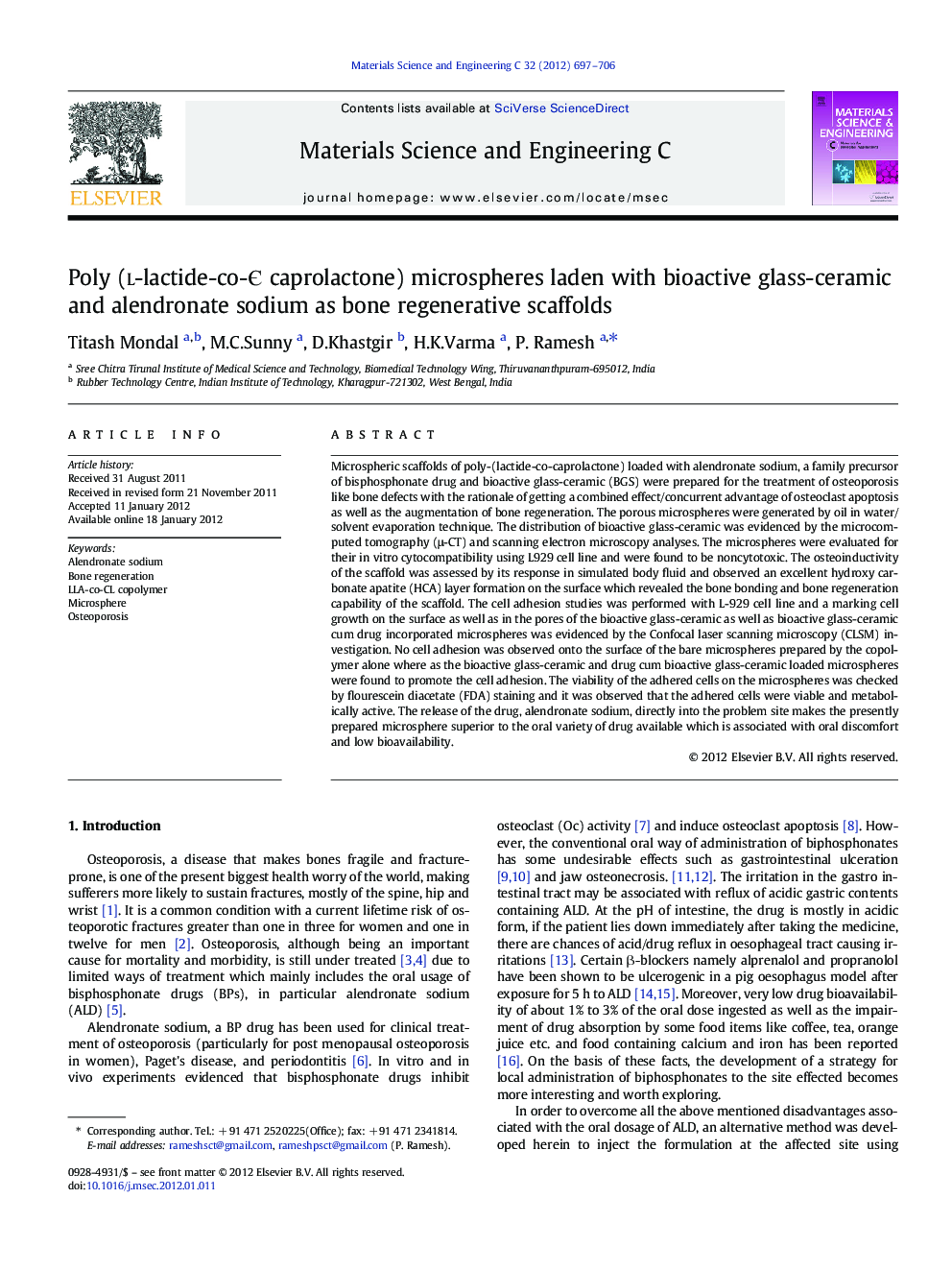| کد مقاله | کد نشریه | سال انتشار | مقاله انگلیسی | نسخه تمام متن |
|---|---|---|---|---|
| 1429614 | 987177 | 2012 | 10 صفحه PDF | دانلود رایگان |

Microspheric scaffolds of poly-(lactide-co-caprolactone) loaded with alendronate sodium, a family precursor of bisphosphonate drug and bioactive glass-ceramic (BGS) were prepared for the treatment of osteoporosis like bone defects with the rationale of getting a combined effect/concurrent advantage of osteoclast apoptosis as well as the augmentation of bone regeneration. The porous microspheres were generated by oil in water/solvent evaporation technique. The distribution of bioactive glass-ceramic was evidenced by the microcomputed tomography (μ-CT) and scanning electron microscopy analyses. The microspheres were evaluated for their in vitro cytocompatibility using L929 cell line and were found to be noncytotoxic. The osteoinductivity of the scaffold was assessed by its response in simulated body fluid and observed an excellent hydroxy carbonate apatite (HCA) layer formation on the surface which revealed the bone bonding and bone regeneration capability of the scaffold. The cell adhesion studies was performed with L-929 cell line and a marking cell growth on the surface as well as in the pores of the bioactive glass-ceramic as well as bioactive glass-ceramic cum drug incorporated microspheres was evidenced by the Confocal laser scanning microscopy (CLSM) investigation. No cell adhesion was observed onto the surface of the bare microspheres prepared by the copolymer alone where as the bioactive glass-ceramic and drug cum bioactive glass-ceramic loaded microspheres were found to promote the cell adhesion. The viability of the adhered cells on the microspheres was checked by flourescein diacetate (FDA) staining and it was observed that the adhered cells were viable and metabolically active. The release of the drug, alendronate sodium, directly into the problem site makes the presently prepared microsphere superior to the oral variety of drug available which is associated with oral discomfort and low bioavailability.
► Predicted model for osteoclast inhibition followed by bone regeneration.
► Good substitute to the oral dosage of Alendronate sodium.
► Good alternative for the patient discomfort associated with oral dosage of Alendronate sodium.
► Promises to show good osseoinductivity and osteoconductivity.
Journal: Materials Science and Engineering: C - Volume 32, Issue 4, 1 May 2012, Pages 697–706